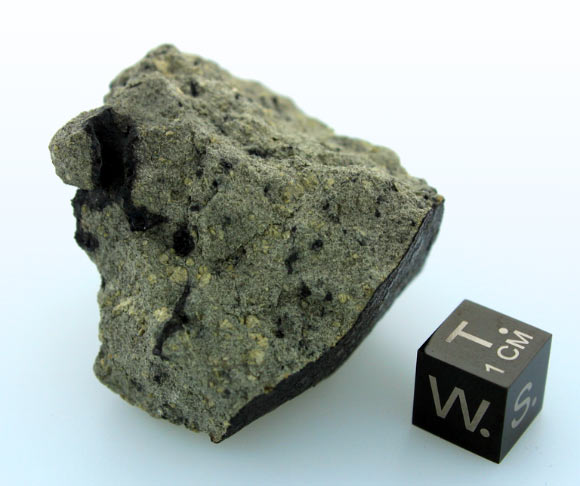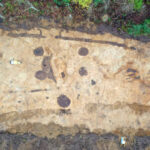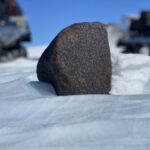An international team of researchers has detected abundant polyaromatic compounds, organic magnesium compounds, aliphatic branched carboxylic acids, aldehydes, and olefins in the Tissint meteorite, which landed near the city of Tissint in Morocco on July 18, 2011.
Tissint is one of only five Martian meteorites that have been observed as they fell to Earth.
This sample of Mars was formed hundreds of millions of years ago on our next-door planetary neighbor and was launched into space by a violent event.
“Mars and Earth share critical aspects of their gross planetary evolution, and while life evolved on Earth, the issue of probable past and current Martian life is the subject of intense research by landed and orbital assets at Mars,” said lead author Dr. Philippe Schmitt-Kopplin, a researcher at the Technical University of Munich and Helmholtz Munich.
“Water and organic molecules, the key prerequisites for habitability and evolution of life, have been detected on Mars, and habitable zones in the deep Martian subsurface potentially suitable for microbial life have been proposed.”
“The presence of methane, organic molecules, and aliphatic/aromatic compounds on Mars has also been found. Discussion as to the origin of these molecules is still ongoing.”
Dr. Schmitt-Kopplin and colleagues were able to thoroughly analyze the Tissint meteorite’s organic inventory, revealing a link between the type and diversity of organic molecules and specific mineralogy.
Their efforts resulted in the most comprehensive catalog ever made of the diversity of organic compounds found in a Martian meteorite or in a sample collected and analyzed by a rover.
The work uncovered details about how the processes occurring in Mars’ mantle and crust evolved, especially with regard to abiotic organics that formed from water-rock interactions.
Of particular interest was the abundance of organic magnesium compounds, a suite of organic molecules not previously seen on Mars, which offer new insights about the high-pressure, high-temperature geochemistry that shaped the deep Martian interior and indicate a connection between its carbon cycle and its mineral evolution.
“Understanding the processes and sequence of events that shaped this rich organic bounty will reveal new details about Mars’ habitability and potentially about the reactions that could lead to the formation of life,” said Dr. Andrew Steele, a researcher at the Carnegie Institution for Science.
“Samples returned from Mars by future missions should provide an unprecedented amount of information about the formation, stability and dynamics of organic compounds in real Martian environments.”
The findings were published January 11, 2023 in the journal Science Advances.
_____
Philippe Schmitt-Kopplin et al. 2023. Complex carbonaceous matter in Tissint Martian meteorites give insights into the diversity of organic geochemistry on Mars. Science Advances 9 (2); doi: 10.1126/sciadv.add6439




